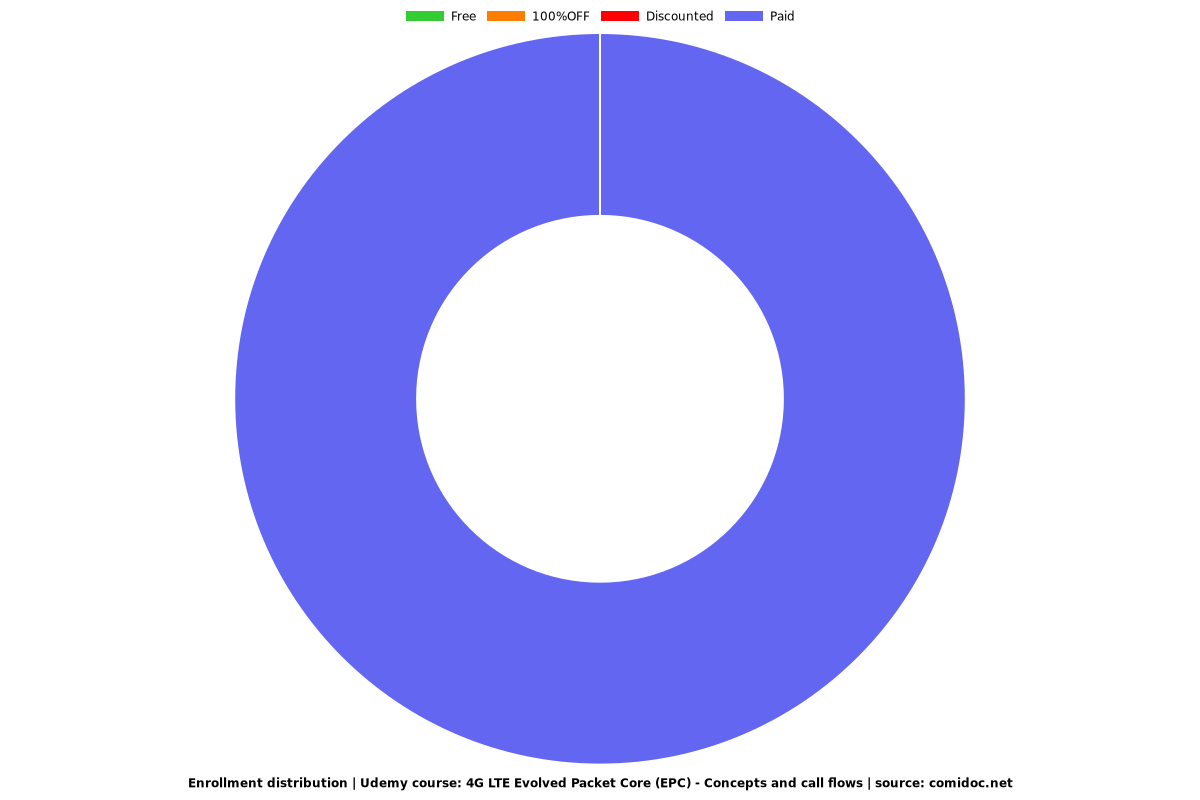4G LTE Evolved Packet Core (EPC) - Concepts and call flows
Learn about the LTE architecture and get an in-depth understanding of LTE call flows by analyzing wireshark traces

What you will learn
Fundamentals of LTE RAN Architecture
LTE EPC architecture and the various network elements (MME, HSS, PGW, SGW and PCRF)
Call Flows - LTE Attach - Analysis of Wireshark logs
Quality of Service (QoS) in LTE - Bearers and Traffic Flow Templates
LTE Protocols and the Various network interfaces.
LTE Network Identifiers - IMSI, GUTI, MCC,MNC etc.
LTE Security - Encryption, Integrity and Authentication
Why take this course?
LTE (4G) is the first network technology that is capable of delivering high-speed data to subscribers. It is the most widely deployed 3GPP technology and its adoption has been the fastest compared to its predecessors (2G, 3G). 4G LTE lays the foundation for the future 5G networks.
This course is designed to provide students with in-depth information regarding LTE EPC architecture. The course has been designed for all levels and starts off by providing the introduction to LTE and its advantages over legacy technologies. We then quickly start by building the foundation needed to understand the LTE technology and its architecture. During the lectures, all concepts are introduced by means of intuitive diagrams and real-network examples whenever possible. Here are some of the reasons why this course is different compared to others -
1. Robust structure
LTE EPC is a complex and very exhaustive topic. That is why we have organized the lectures in a way that students can quickly understand concepts.
2. Intuitive Examples and Use Cases
So many courses and books just bombard you with the theory. But they forget to explain, perhaps, the most important part: why you are doing what you are doing. And that's how this course is so different. We focus on developing an intuitive *feel* for the concepts behind LTE.
3. Real network Examples
In this course, we use real Wireshark traces from a test network to describe call flows rather than just relying on theory. This way we are able to deliver practical information to the students that will help them in real-world scenarios.
4. 3GPP based material
Throughout the course, we refer to the relevant 3GPP specifications so that students can become familiar with 3GPP specifications.
5. IN-COURSE SUPPORT
Have you ever taken a course or read a book where you have questions but cannot reach the author?
Well, this course is different. We are fully committed to making this the most disruptive and powerful LTE EPC course on the planet. With that comes a responsibility to constantly be there when you need our help. No matter how complex your query, we will be there. The bottom line is we want you to succeed. Therefore, feel free to send us a message and we will get back to you as soon as possible.
Good Luck and Happy learning!
Screenshots
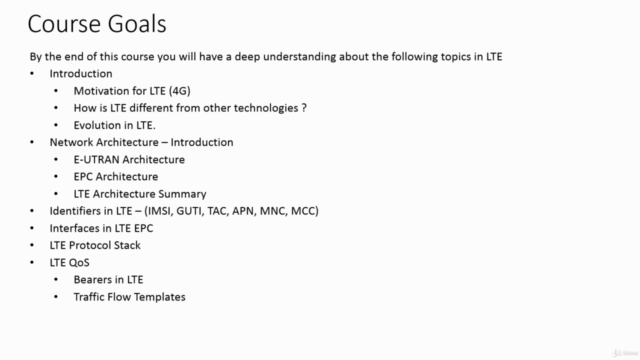
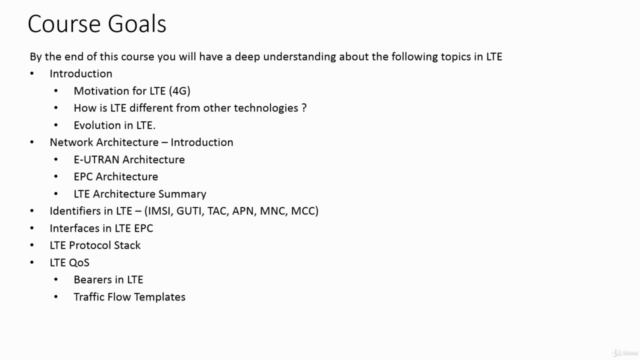
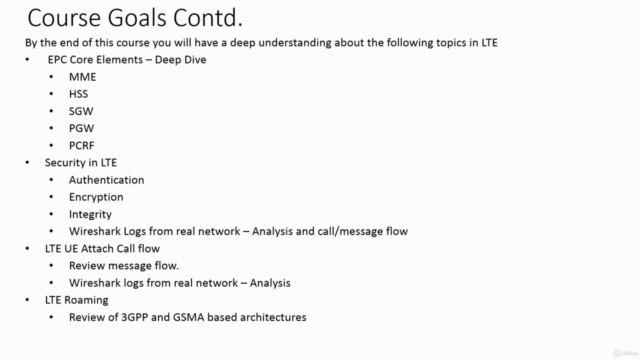
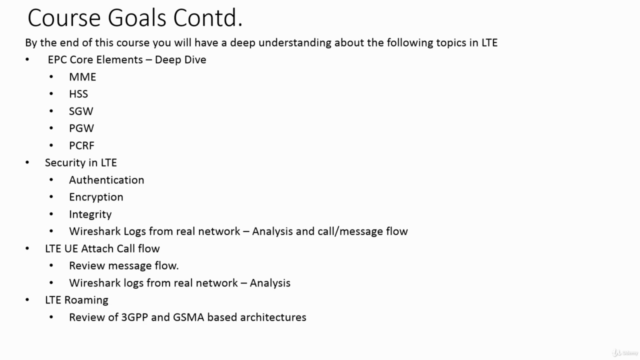
Our review
Charts
Price
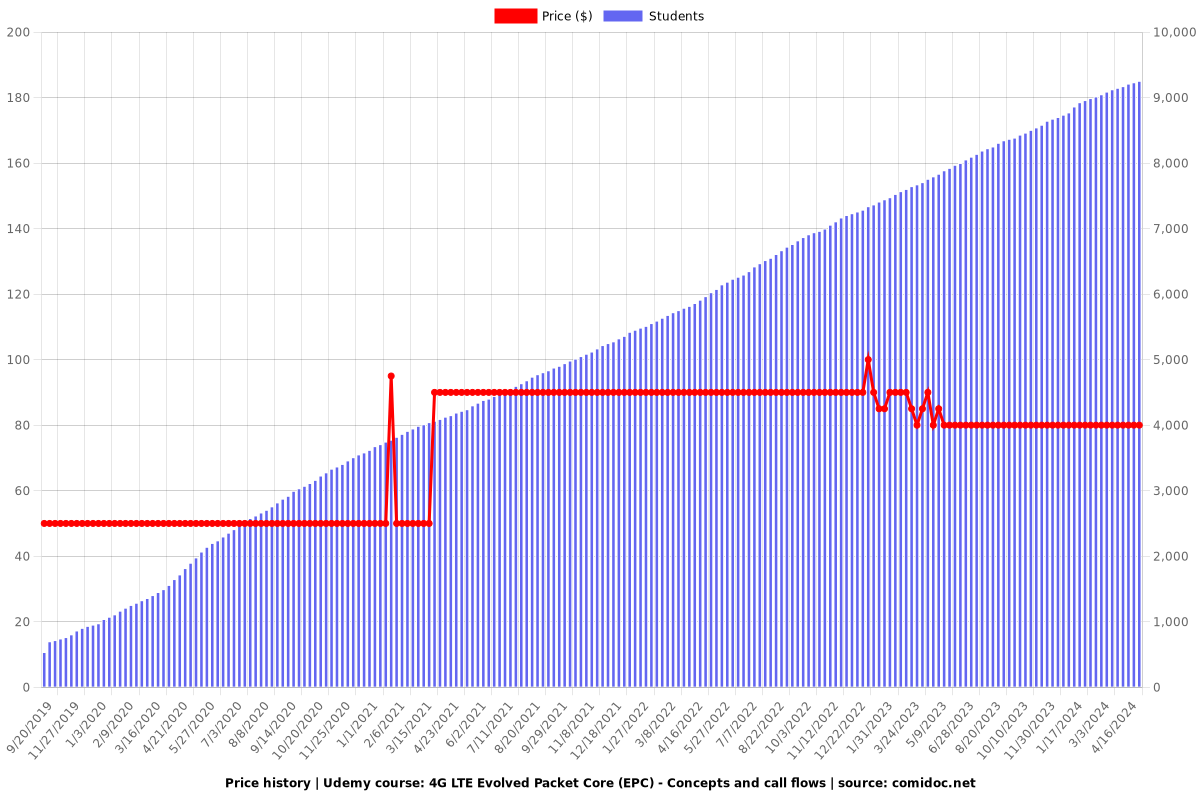
Rating

Enrollment distribution
